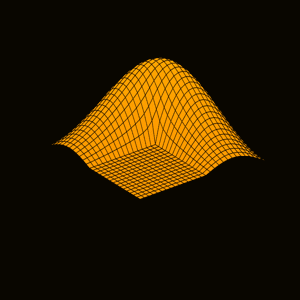
Rob Schrieber is one of my very best friends.... 더 읽어보기 >>

Rob Schrieber is one of my very best friends.... 더 읽어보기 >>

Nick Trethen is a world famous computational scientist and my good friend.... 더 읽어보기 >>

Jack Dongarra is my student, colleague and friend.... 더 읽어보기 >>

Pete Stewart is one of my closest colleagues.... 더 읽어보기 >>

The tangram is an ancient Chinese puzzle with seven pieces.... 더 읽어보기 >>

I was invited recently to give a virtual talk to the student chapter of SIAM at JUIT, the Jaycee Institute of Information Technology, in Wagnaghat, India.... 더 읽어보기 >>

Like millions of other folks, I play Wordle from the New York Times almost every day. The Times reports that Wordle puzzle number 1497 on Friday, July 25, was especially difficult. The average puzzler required 5.7 attempts and many failed to get the answer in the six moves allowed. I have a MATLAB assistant that I call Wordler and, even with her help, I failed on number 1497. Here's why.... 더 읽어보기 >>

In 1988, while I was with Ardent Computer in Silicon Valley, I gave a talk that previewed MATLAB graphics. The title was "Pictures of Matrices". At the time, a mathematician friend of mine asked.... 더 읽어보기 >>

The twenty-second Householder Symposium on Numerical Linear Algebra was held June 8 - June 13 at Cornell. The local organizers were Anil Damle, Alex Townsend and David Bindel. Anil served as host and cheerleader.... 더 읽어보기 >>

The twenty-second Householder Symposium on Numerical Linear Algebra is this week, June 8 - June 13, 2025 at Cornell. My talk on Wednesday had the provocative title "A Million-Dollar Matrix". A PDF of the slides available at link_1. The talk covers posts in the Cleve's Corner blog last fall. link_2, link_3, link_4.... 더 읽어보기 >>
이 게시물은 작성자 개인의 의견이며, MathWorks 전체의 의견을 대변하는 것은 아닙니다.